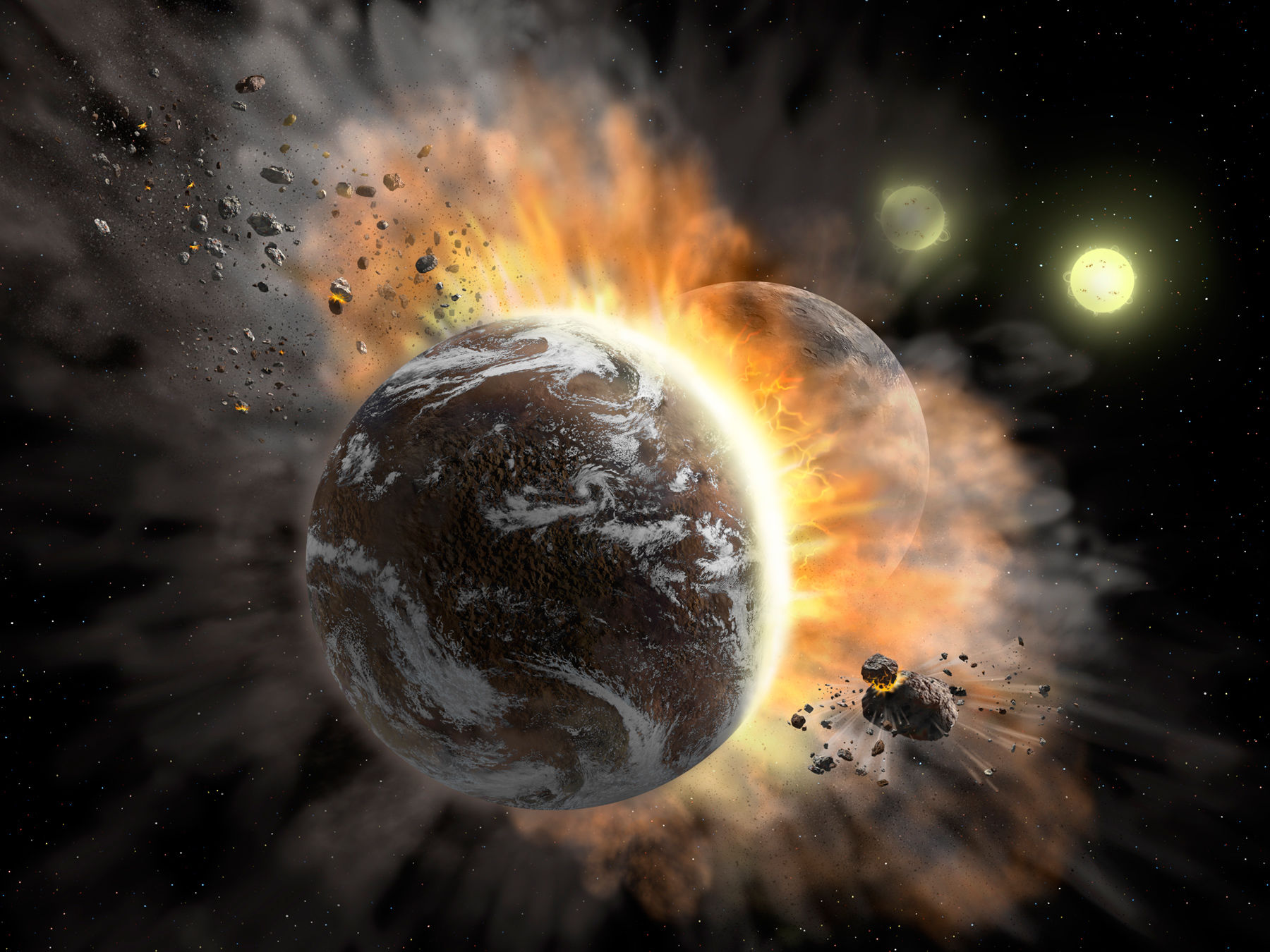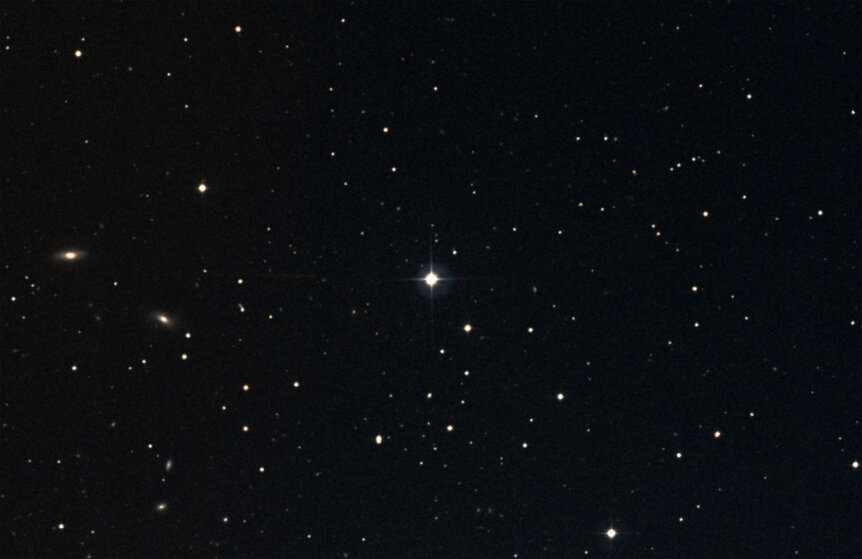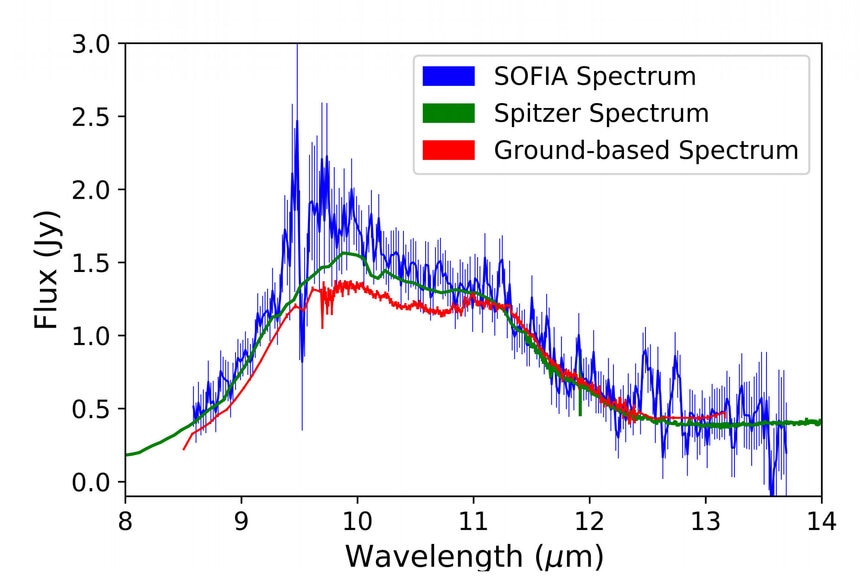Create a free profile to get unlimited access to exclusive videos, sweepstakes, and more!
Exoplanet smashup: The very weird dust disk around BD +20 307

The placements of the planets in our solar system are pretty stable. By that I mean their orbits don't change much over time. There are changes, to be sure, but they tend to be slow or cyclic, and any big changes would take millions, if not billions, of years to play out.
That's not the case with all stars, though. Take the binary star BD +20 307. Some time in the recent astronomical past, two of its planets, um, collided.
This epic smashup created a vast disk of dust around the stars, choked with debris from the planetary train wreck. Over time, various forces should start to blow the dust away, making the disk dimmer. The thing is, though, the dust around the stars is getting brighter.
So what's the deal? Quick answer: No one knows. But there are some evidence-based guesses, though they're still weird.
BD +20 307 is actually two stars, about 390 light years from Earth in the direction of the constellation Aries. They're both F-type, which means they're a little bit more massive, hotter, and brighter than the Sun. They orbit each other, and that orbit is tight: they circle each other in just 3.4 days. If I've done my math correctly, that means they're separated by a little under 10 million kilometers, which is pretty close. By looking at their spectra carefully, astronomers know they are over a billion years old at least.
Which is what makes the next part pretty peculiar. When astronomers observed them with infrared telescopes, the stars were way brighter than they should be. This is called an infrared excess, and it's a smoking gun for a disk of dust around the stars. Small grains of rocky material absorb the starlight and warm up, radiating away that warmth as infrared light.
This is pretty common around young stars; they form from huge disks of gas and dust, and stuff far from the star accretes to form planets moons, asteroids, and comets. Once the star turns on, its fierce wind blows away the dust. This usually happens after something less than 100 million years.
But wait… the two stars in BD +20 307 are over a billion years old. No way that disk has been there that long! Yet, measuring the infrared light, astronomers find that BD +20 307 is the dustiest star system known for its age.
That means something more recent happened. Something big, something catastrophic, something that created enough dust to be the equivalent of an object 110 kilometers across being ground into fine powder.
Just one thing fits that scenario: Planetary collisions.
At some point in the past, probably not too long ago cosmically speaking, two planet-sized worlds in that system whacked into each other. A huge amount of the planets vaporized, then condensed into dust, forming a disk around the stars.
OK. Once you accept that, though, there are weirdnesses. For one thing, there's no cold dust there. You'd expect that after some time the dust would get blown back from the star, farther out, where it would cool off. Nothing like that is seen. The dust seems to be confined to an annulus roughly 150 million kilometers out from the stars (about the same size as Earth's orbit).
Then there's the really weird thing. Observations were taken in 2004 using the massive Keck and Gemini North telescopes. In 2005, a year later, more observations were made using the Spitzer Space Telescope. In 2015, a decade later, more observations were made using SOFIA, an infrared telescope mounted — get this — in the side of a modified 747; it provides a stable platform and gets above a lot of the water vapor and carbon dioxide in Earth's atmosphere which absorb IR light.
The thing is, the SOFIA observations clearly show that at the shorter wavelength end of infrared, the dust has gotten significantly brighter over the past decade. Something like 10% brighter.
That's very peculiar, as I mentioned. It should get fainter with time. Not only that, but it looks like that at shorter wavelengths (that is, at a different color) it's gotten brighter more than at longer ones — the SOFIA data hint at that but it's hard to say how significant it is. What could cause all that?
The team of astronomers who made the observations has some ideas. Maybe the stars have gotten brighter, and so the dust absorbs more light, getting brighter. But that would be weird, because old F stars don't usually change brightness, and certainly not enough to account for the huge change in the dust emission. It's possible they've become active, like the Sun's 22-year magnetic cycle, and that is warming the dust. That seems unlikely, though, since the extra energy involved is huge.
One assumption they made is that there has been a steady collisional cascade in the system: After the planets collided, smaller chunks then hit each other, making even smaller ones, and so on. But they think that's incomplete. The sheer density of the disk is too high for that to be the only case, unless we happened to catch this disk right after the collision formed it. Also, this wouldn't account for the brightening. It's possible there was a statistically fluky uptick in collisions from smaller pieces recently, but that would have to be huge to account for what's seen.
They posit more esoteric situations. It's possible that the silicates in the dust have undergone a phase change, going from crystals (like olivine) to more amorphous (glassy) clumps. That can affect the spectrum, and even account for the color-dependent brightening. Or maybe the disk is precessing around the star, changing its orientation like a top does as it spins down. In that case we may be seeing it more face-on in 2015 then in 2005. The physical situation there is a bit unlikely, though, and that doesn't account for the color change.
I didn't see this in the paper, but I wonder… the fact that there isn't any cold dust could mean the collision really was pretty recent. Maybe we are just lucky, and caught it near the beginning. If that's the case the brightening may be due to some smaller chunks recently colliding, adding dust to the disk. The amount of new dust to account for the brightening is the equivalent of sphere 48 kilometers across, well within the range of big planetary debris.
But this is the fun bit: We don't know. It's weird. So maybe there's something else going on, or some combination of things, or we're seeing it earlier than first thought.
If you've read anything I've ever, then you know what I'm about to write: We need more observations. Given the fast temporal nature of this system and the scientific interest, I wonder if the James Webb Space Telescope may give it a look-see; JWST's MIRI instrument is sensitive to exactly these wavelengths.
We have plenty of evidence that planetary collisions occur in other systems, like Kepler-107 and RW Aur A. Heck, we know they happened here, long ago; our own Moon appears to be proof of that. But that was billions of years ago, while the planets around BD +20 307 may have collided much more recently than that.
It's a violent Universe, and while we still don't understand all the particulars, we do have a pretty good seat to watch.





























